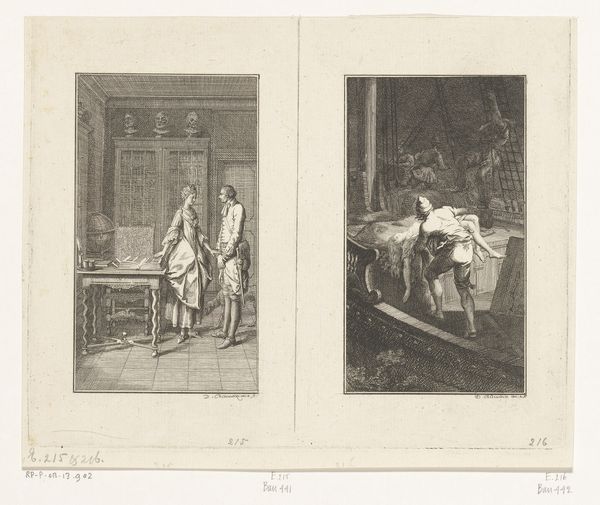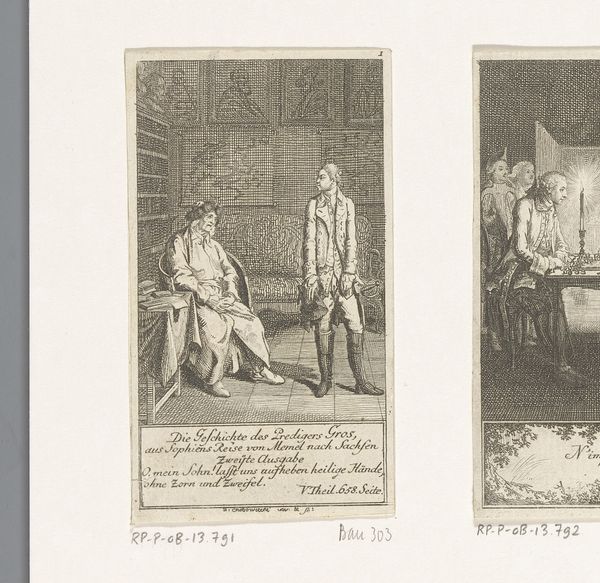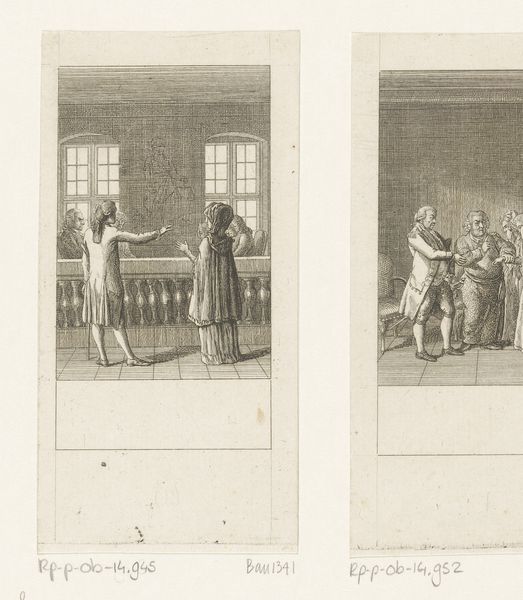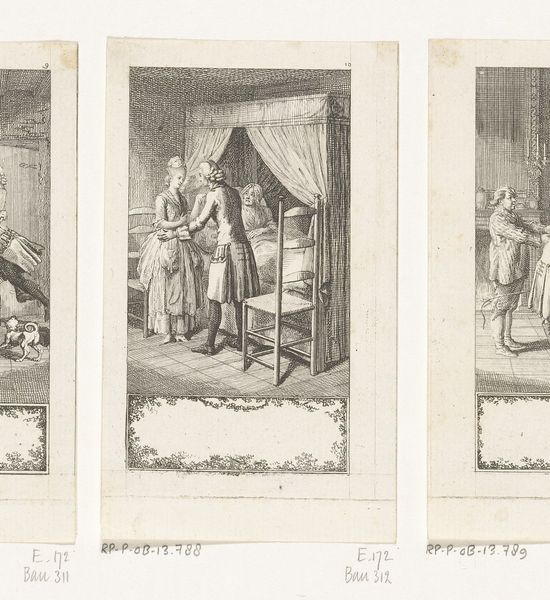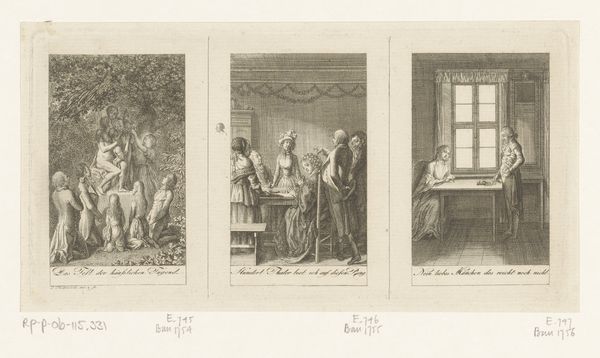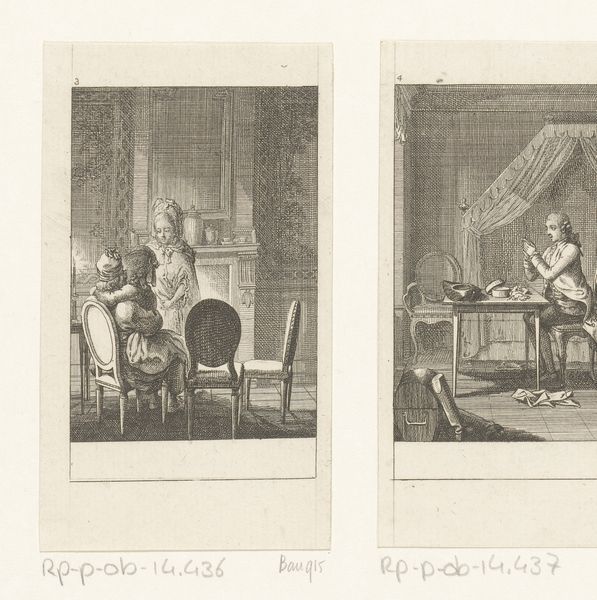
Twee satirische voorstellingen uit het Taschenbuch für Aufklärer und Nichtaufklärer 1790
0:00
0:00
Dimensions: height 137 mm, width 186 mm
Copyright: Rijks Museum: Open Domain
Curator: This engraving from 1790 by Daniel Nikolaus Chodowiecki is titled "Twee satirische voorstellingen uit het Taschenbuch für Aufklärer und Nichtaufklärer" – quite a mouthful! It’s housed here at the Rijksmuseum. Two scenes, starkly contrasted… Editor: My first impression is theatrical, even a bit absurd. There's a strong sense of staged drama, heightened by the engraver's skilled rendering of light and shadow. It makes me wonder what kind of social commentary Chodowiecki was aiming for. Curator: Well, consider the title! "Two satirical scenes from the Pocket Book for Enlightenment Thinkers and Non-Enlightenment Thinkers." It's essentially a before-and-after depiction. On the left, a kneeling figure seems to be receiving some form of blessing, maybe an endorsement by men with status. In the other panel, a patient receives hypnosis while a glowing nude watches from afar. Editor: The "before" scene reeks of rigid societal norms, of adhering to traditional power structures. The subjects are being validated in public. But the scene on the right appears more fluid, with implied danger as it explores some unseen influence on a very private event. Both of them reek of labor... engraving had a real material purpose beyond pure artmaking. Curator: Exactly. He’s using humor to critique these approaches. The Enlightenment emphasized reason and logic, but Chodowiecki seems to be saying neither blind faith nor the extremes of occultism offers a clear path forward. To think for oneself would have taken on so much meaning in a highly class-stratified society. It makes one ponder the subtle details that were encoded into such images during that era, and consider the lives affected by belief. Editor: And the act of producing and disseminating these images… they were designed to circulate widely, shaping public opinion and consumer behavior at that time. And they weren’t always high-status commissions but often relied on more plebeian or mercantile economic incentives to drive demand. These images have their fingers deep in both the artistic and economic clay! Curator: A powerful reminder of the role art plays in reflecting—and challenging—the prevailing thought of any age. How these works function is less important than considering their presence, like small ghosts floating through time that ask viewers to grapple with our nature. Editor: Right. By questioning and reframing our approach to these works, the hidden production or social value is unearthed to enrich one's own artmaking or other design field practices. Thanks for enlightening me today!
Comments
No comments
Be the first to comment and join the conversation on the ultimate creative platform.

